Sylvia Nagy’s career is a testament to the seamless fusion of industrial technology, artistic expression, and ceramic design. Her academic journey began at Moholy-Nagy University in Budapest, where she earned an MFA in Silicet Industrial Technology and Art. This foundation was further enriched at the Parsons School of Design, where Nagy was not only invited to teach but also developed a specialized course on Mold Model Making in Plaster, highlighting her expertise in ceramics. Her artistic pursuits have taken her across the globe, with residencies in Japan, China, Germany, the USA, and Hungary, each influencing her creative approach. As a recognized member of the International Academy of Ceramics (IAC) in Geneva, Switzerland, Nagy’s work has been showcased in museum collections in France, Spain, Korea, and other countries. Outside her artistic endeavors, she is passionate about dance, fashion, styling, design trends, and photography.
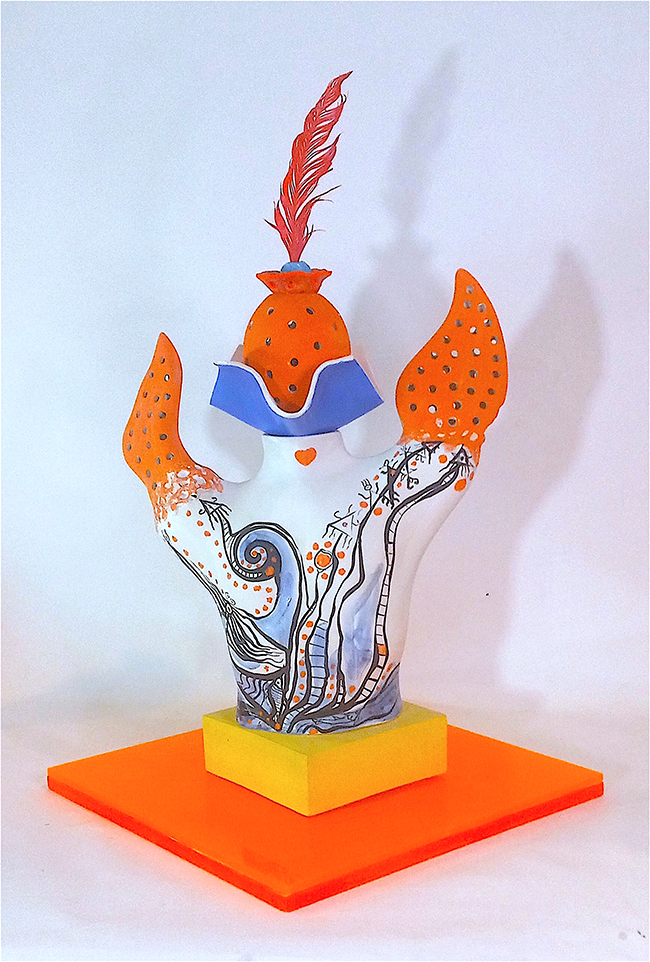
Nagy’s art engages deeply with the environmental issues of our time. Her 2024 creation, “Torso-Pitcher,” made from slip-cast stoneware, addresses the critical problem of ocean pollution. This 12-inch tall and equally wide sculpture serves as a powerful statement on the destructive impact of plastic waste on marine life.
“Torso-Pitcher” is not just a piece of art but a profound commentary. The choice of stoneware, a material known for its durability, is deliberate, symbolizing the relentless persistence of plastic pollution in our environment. Traditionally used for its practical properties, stoneware here takes on a symbolic role, representing the unyielding presence of plastic. The form of the torso, often linked to human strength and vulnerability, combined with the pitcher—a vessel meant to sustain life—highlights the tragic irony of objects intended to nurture life now contributing to its degradation.
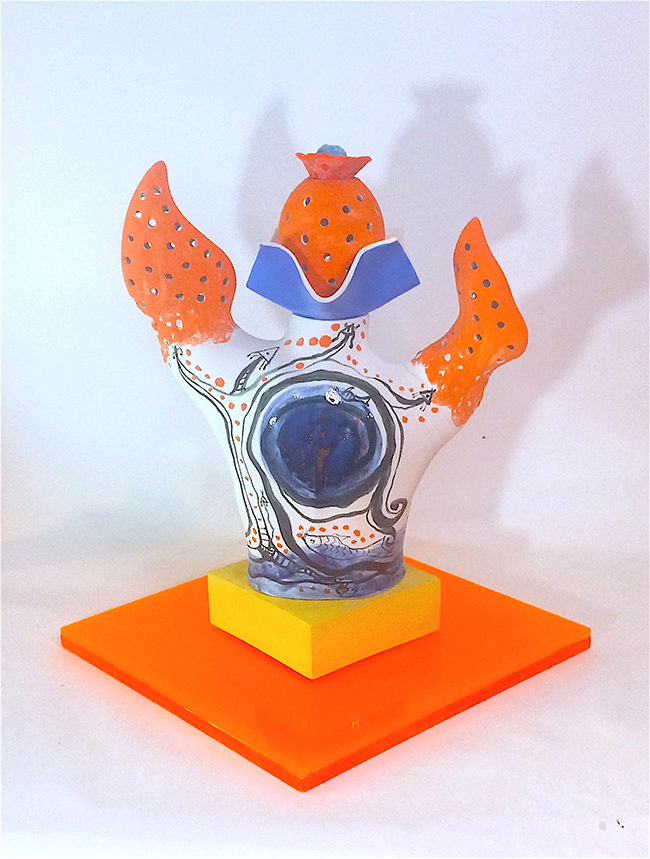
The tactile qualities of the stoneware add to the work’s significance. The smooth surface of the material contrasts starkly with the harsh reality of plastic pollution, creating a dynamic that prompts viewers to consider their role in this environmental crisis. The sculpture’s proportions give it a solid, yet intimate, presence, making a strong statement on the widespread issue of pollution.
In a companion piece titled “Heart of Torso-Pitcher,” also from 2024, Nagy delves further into the theme of environmental responsibility. Crafted from the same slip-cast stoneware and maintaining the same dimensions, this work continues the conversation initiated by “Torso-Pitcher,” with a greater focus on personal accountability and the choices we make in our daily lives.
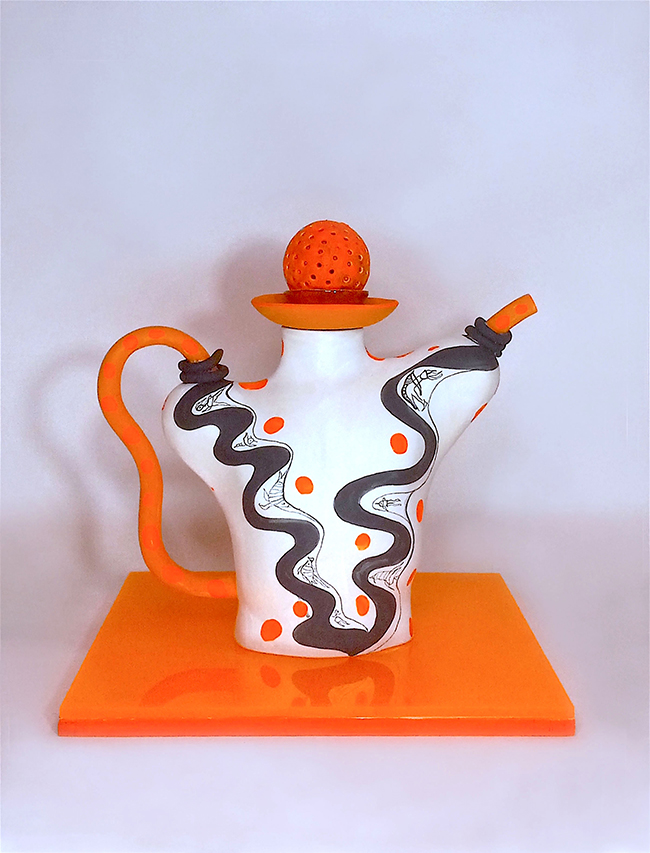
Nagy drew inspiration for “Heart of Torso-Pitcher” from her time in Japan, where the culture of recycling and minimizing waste is deeply ingrained. In a society where space is at a premium, and wastefulness is avoided, the use of reusable materials is paramount. This experience is reflected in Nagy’s work, which encourages a shift away from single-use plastics in favor of sustainable alternatives.
The “Heart” in the title underscores the central issue—the need for a mindset shift toward sustainability and personal responsibility. The piece invites viewers to reflect on how their daily choices impact the environment. By opting for materials like ceramic and glass instead of plastic, we can make a positive contribution to the future of our planet.
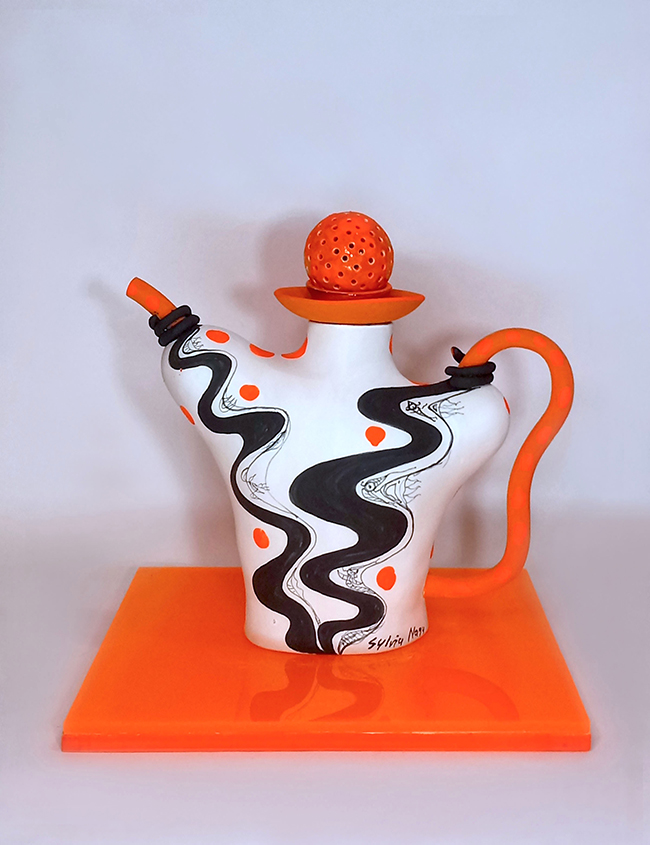
The weight and solidity of the stoneware in “Heart of Torso-Pitcher” serve as a physical reminder of the lasting impact of our choices. The sculpture’s dimensions make it a contemplative piece, urging viewers to consider their place within the larger environmental context.
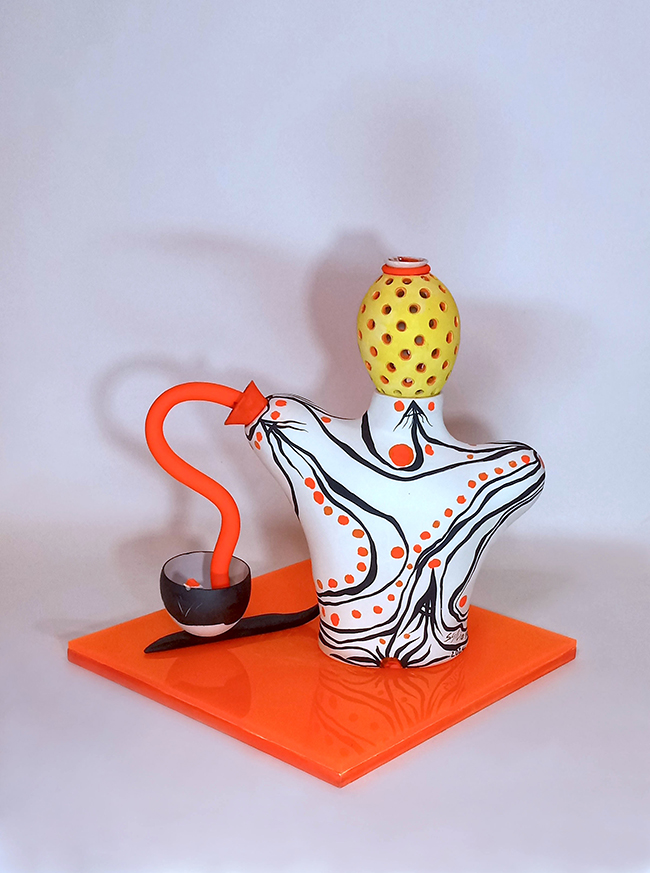
Sylvia Nagy’s art is a blend of creative expression and environmental advocacy. Her sculptures move beyond mere visual appeal, calling for action toward more sustainable practices. Through the use of slip-cast stoneware, Nagy showcases her craftsmanship while also emphasizing the urgent need for resilience and responsibility in our relationship with the environment. Her work serves as a powerful reminder that while human actions can cause significant harm to the planet, they also have the potential to protect and restore it.

